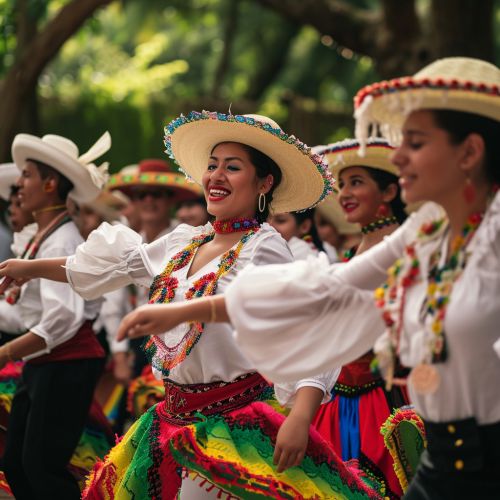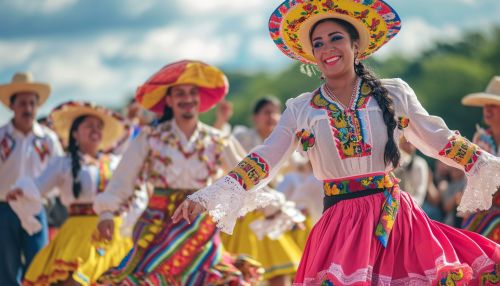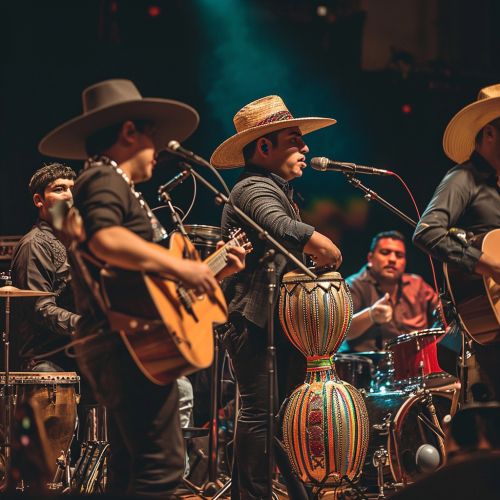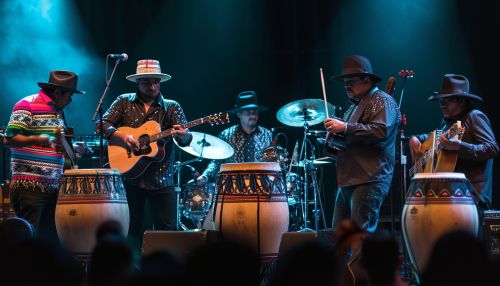Cumbia
Origins
The origins of Cumbia can be traced back to the African slaves brought to the Americas by the Spanish colonizers during the 17th century. The music and dance style originated in the Caribbean coast of what is now Colombia and Panama. The term "Cumbia" is derived from the African word "Cumbe", which means dance. It was a way for the slaves to communicate and express their feelings and emotions. The music was a blend of African, Indigenous, and Spanish influences, reflecting the diverse cultural heritage of the region.


Musical Characteristics
Cumbia is characterized by a rhythmic pattern known as the "Cumbia beat", which is played on a variety of percussion instruments. The primary instruments used in traditional Cumbia are the drums, the gaita, and the maracas. The gaita, a type of flute, plays the melody, while the drums and maracas provide the rhythm. The music is usually accompanied by a group of dancers who perform a series of steps and movements that reflect the rhythm of the music.
Evolution and Influence
Over the centuries, Cumbia has evolved and diversified, spreading to other parts of Latin America and influencing various other music genres. In the 20th century, Cumbia became popular in Mexico, where it was adapted and incorporated into the local music scene. This led to the creation of a new subgenre known as Cumbia Sonidera. Similarly, in Argentina, a variant known as Cumbia Villera emerged, reflecting the socio-economic realities of the urban poor.
In the United States, Cumbia has influenced the development of Tejano music, a popular music style among the Mexican-American community. It has also been incorporated into the repertoire of various Latin pop and rock artists.
Modern Cumbia
Today, Cumbia continues to be a popular music and dance style in Latin America and among Latino communities worldwide. Modern Cumbia incorporates elements from other music genres such as reggae, hip hop, and electronic music. This fusion of styles has resulted in a vibrant and dynamic music scene, with artists continually pushing the boundaries and experimenting with new sounds and rhythms.


Cultural Significance
Cumbia is more than just a music and dance style; it is a cultural expression that embodies the history, struggles, and aspirations of the people. It is a symbol of resistance and resilience, a testament to the enduring spirit of the communities that created it. Despite the changes and adaptations over the centuries, the essence of Cumbia remains rooted in its African, Indigenous, and Spanish heritage.
